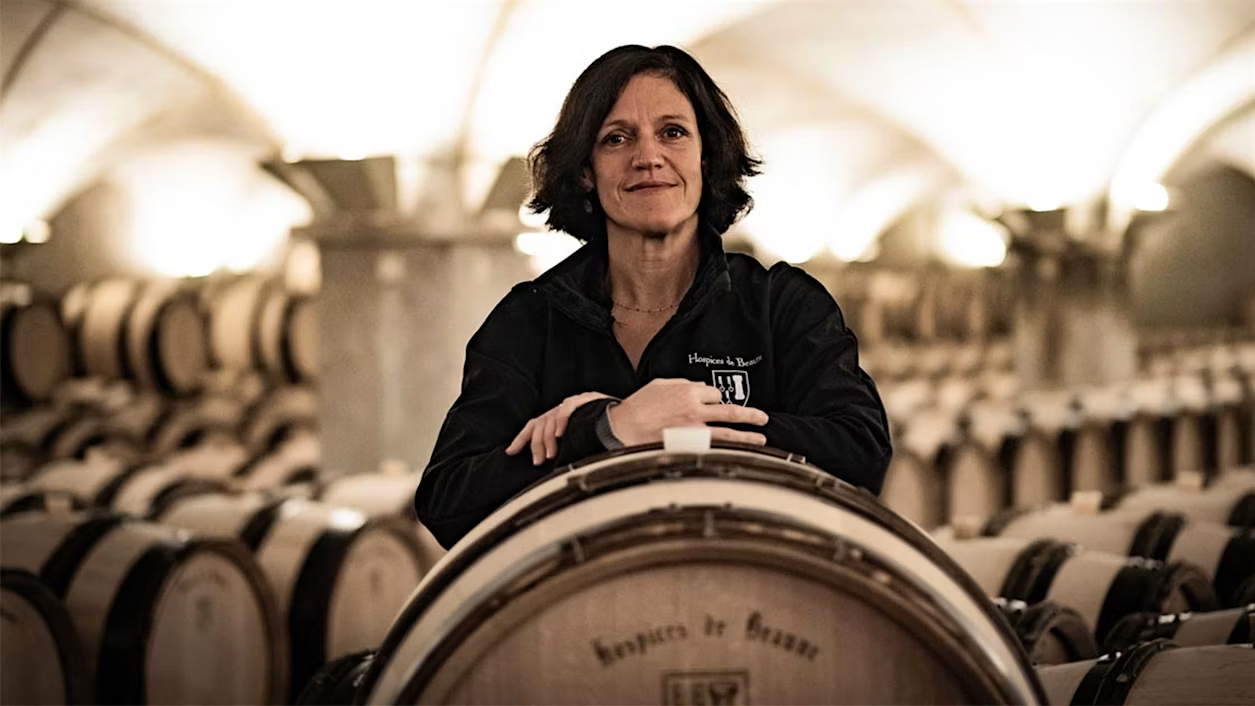As the wine industry evolves, 2024 is witnessing the rise of several lesser-known red wine varietals that are capturing consumers’ interest. Among these emerging stars is Tannat, a grape variety originally from southwestern France, particularly Madiran. Tannat is experiencing a renaissance, especially in regions like Uruguay, where the unique terroir contributes to its robust and tannic profile, complemented by dark fruit flavors and earthy undertones. This varietal’s increasing popularity can be attributed to wine enthusiasts seeking depth and character in their selections.
Another notable varietal making waves is Listán Negro, predominantly grown in the Canary Islands. It is recognized for its vibrant acidity and berry flavors, which reflect the volcanic soils of the region. As consumers lean towards distinct tasting experiences, Listán Negro presents an exciting option, often characterized by its aromatic complexity and elegant finish. The revitalization efforts in regions like Tenerife showcase how traditional grape types can thrive in innovative winemaking practices.
The growing awareness and interest in sustainability within wine production has led to a focus on organic and biodynamic farming methods. This shift not only impacts the flavors and quality of wine but also encourages the exploration of niche varietals that adhere to environmental standards. As producers embrace these practices, lesser-known grape varieties are gaining traction, forging a new path for wine lovers to explore beyond the mainstream options.
Overall, the landscape of red wine is expanding, driven by consumer desires for unique and diverse tasting experiences. As 2024 unfolds, the emergence of varietals like Tannat and Listán Negro heralds a new chapter in the wine world, encouraging exploration and appreciation for wines that reflect not just the grape but the essence of their origins.
Sustainable Practices: The Future of Red Wine Production
As the global awareness of environmental issues continues to rise, the wine industry, particularly red wine production, is increasingly adopting sustainable practices. This shift is driven by the necessity to combat climate change, reduce resource consumption, and cater to a growing consumer demand for transparency and ethical sourcing. Wineries are now exploring various methodologies to enhance sustainability, including organic farming and biodynamic methods, which prioritize soil health, biodiversity, and ecosystem balance.
Organic farming has gained traction within the red wine sector, wherein vineyards refrain from using synthetic pesticides and fertilizers. By embracing organic methods, winemakers not only preserve the surrounding environment but also promote the development of healthier grapes, which can lead to a richer flavor profile. Furthermore, biodynamic practices, which extend beyond organic farming by using natural preparations and considering lunar cycles, are also emerging as a favorite among some producers, with the belief that these techniques can create superior wine quality.
In addition to farming methods, the packaging of red wine is undergoing a transformation. Eco-friendly packaging options, such as lightweight bottles and alternative materials, are becoming common as wineries strive to reduce their carbon footprint. These packaging innovations not only enhance the sustainability of the production process but can also appeal to environmentally conscious consumers looking for green alternatives in their wine choices.
Several wineries are leading the way in implementing these sustainable practices, serving as examples for the industry. For instance, a number of renowned vineyards have successfully transitioned to certified organic or biodynamic status, showcasing the potential for high-quality red wines that adhere to these principles. As the trend toward sustainability continues to evolve, it is expected that these practices will significantly impact consumer preferences and drinking habits, making sustainable red wines more prevalent and sought after in the coming years.
Flavor Trends: The Rise of Bold and Low-Alcohol Reds
As we delve into the red wine landscape of 2024, two prominent trends have emerged: the increasing demand for bold, fruit-forward varieties and a significant shift towards low-alcohol offerings. Consumers are gravitating towards wines that deliver intense flavors while minimizing the sensation of high alcohol content. This evolving preference is heavily influenced by a growing interest in wines from cooler climate regions, which often produce vibrant, nuanced reds with lower alcohol levels.
Bold red wines are characterized by their robust flavor profiles, often showcasing ripe blackberries, cherries, and earthy undertones, making them particularly appealing to consumers seeking rich tasting experiences. In contrast, low-alcohol reds are becoming more popular as wine enthusiasts seek to enjoy a glass without the overpowering effects of high alcohol beverages. This inclination toward lower alcohol wines can be attributed to a broader health consciousness among consumers, who are increasingly mindful of their alcohol intake.
Winemakers are responding to this dual trend through innovative practices in both fermentation and grape selection. Techniques such as carbonic maceration are allowing producers to create wines that emphasize freshness and bold flavors, often at lower alcohol rates. Meanwhile, there is a noticeable emphasis on sourcing grapes from cooler vineyards, which naturally yield wines with balanced acidity and vibrant aromas. As a result, the winemakers are crafting offerings that align with contemporary consumer preferences, ensuring that bold, fruit-driven flavor profiles are maintained, yet with a lighter touch.
As these trends continue to develop throughout 2024, the landscape of red wine will transform, presenting wine lovers with a diverse array of choices that harmonize rich flavors with a more refined alcohol content.
Red Wine Pairing Innovations: Complementing Culinary Trends
As the culinary landscape evolves in 2024, the integration of innovative red wine pairings with emerging food trends becomes increasingly relevant. The rise of plant-based dishes has transformed how we consider wine compatibility. Sommelier experts suggest that red varietals like Pinot Noir and Gamay, known for their lighter body and fruit-forward profiles, offer elegant pairings with hearty vegetable dishes, such as roasted beet salad or mushroom risotto. These wines complement the umami flavors commonly found in plant-based cuisine, as their acidity and light tannins prevent overwhelming the dish.
In addition to plant-based options, global culinary influences are making their mark. Dishes that combine flavors from various cultures—such as Korean BBQ tacos or Moroccan spiced stews—call for a versatile and bold red wine, such as Syrah or Zinfandel. The spicy and smoky notes of these wines enhance the complex flavors that these fusion foods present. Chefs advocate exploring wines from regions that share culinary connections; for instance, pairing a Northern Rhône Syrah with Mediterranean-inspired grilled meats can elevate the dining experience by bridging cultural flavors with the traditional food synergy.
Furthermore, the trend toward sustainable and locally sourced ingredients provides an opportunity for consumers to explore small-batch, organic red wines. The practice of sourcing wines from local vineyards not only supports regional agriculture but also encourages a fresh perspective on food pairings. A well-chosen local Cabernet Sauvignon can pair beautifully with a grass-fed beef dish, emphasizing both the quality of the meat and the terroir of the wine. As diners seek unique experiences, the harmonious blend of innovative cuisine and carefully curated red wine selections becomes a focal point for enhancing palates in 2024.
By embracing these pairing innovations, consumers can create memorable dining experiences that reflect both the current gastronomic trends and the versatility of red wines.










Isnt it interesting how bold, low-alcohol reds are on the rise? Wonder how thats going to affect the sustainable production practices!
Isnt it fascinating how were moving towards bold, low-alcohol reds? Wonder how this shift will shape culinary pairing trends. 🍷#WineLoversThoughts
So, are these bold, low-alcohol reds going to stand up to spicy foods? Asking for a friend. #winepairingdebates
Bold, low-alcohol reds with spicy foods? Ha! More like a recipe for disaster. #UnpopularOpinion
Interesting read! Are lower-alcohol reds really as bold in flavor? Whats the science behind this? Sustainability is a win though!
No mention of organic red wines? Felt like thats a trend thats been gaining momentum, too. Missed opportunity maybe?
Isnt it fascinating how low-alcohol reds are trending? Wonder how this might influence the traditional wine and food pairing etiquette. Thoughts?
Interesting read! Curious though, do these bold, low-alcohol reds still offer the same health benefits as traditional ones? 🍷🤔
So, are we going to see a new red wine boom with these bold, low-alcohol choices? Cheers to sustainability, though! 🍷🌱
Is anyone else surprised that they didnt mention the rise of biodynamic wines? Seems like a key trend to miss.
Anyone else intrigued by these low-alcohol reds? Could they really be as bold as our full-strength favs? 🍷🤔
Definitely intrigued, but skeptical. Full-strength has a charm that low-alcohol might not capture. 🍷👀
Are we sure sustainability wont compromise the taste of our beloved reds? Curious about these new varietals too! #WineTrends2024
Are these sustainable practices also improving wine taste, or just eco-friendly?
Bold, low-alcohol reds? Cant wait to see how that shakes up wine pairings!
Bold, low-alcohol reds and culinary trends, now thats a refreshing combination!
Are these new reds really bold or just hyped-up grape juice?
Bold, low-alcohol reds paired with innovative cuisine? Count me in for 2024!